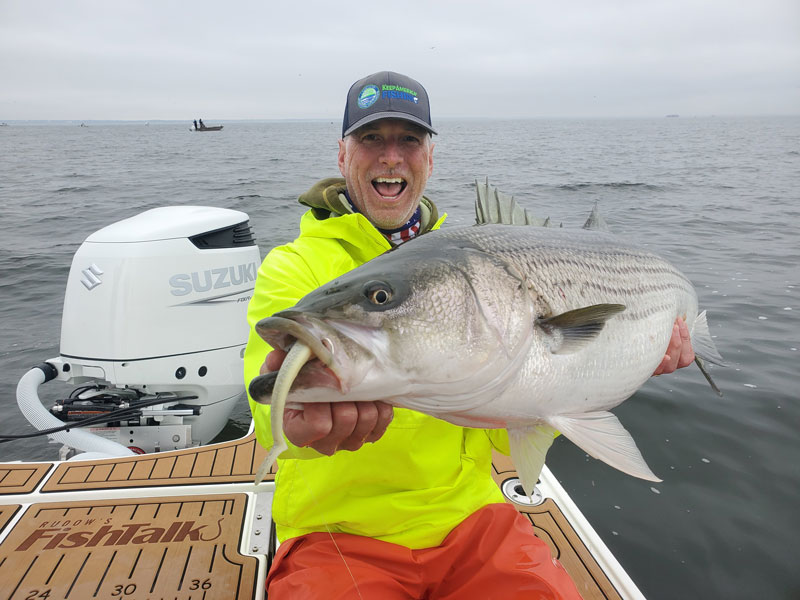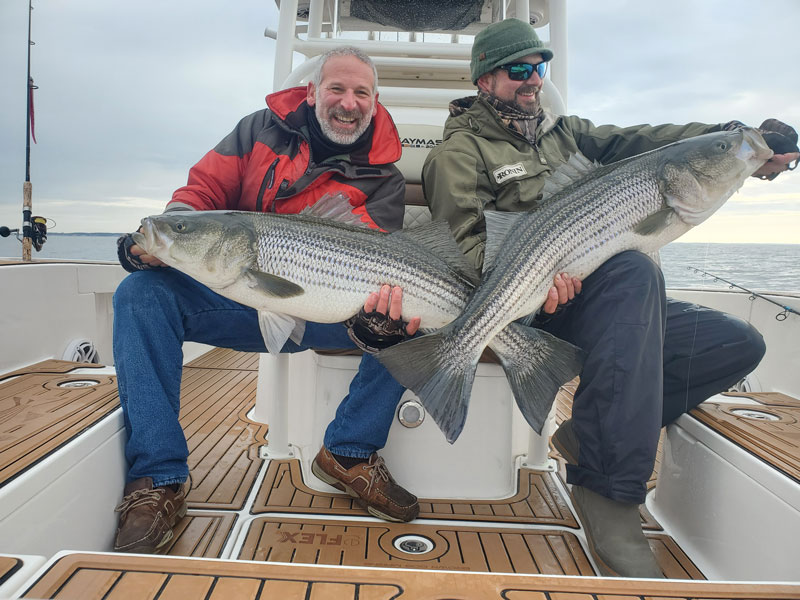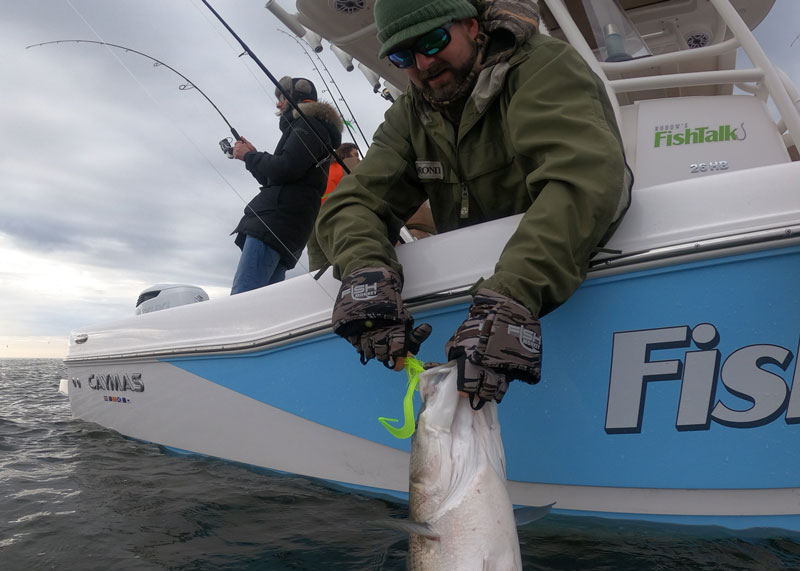We’ve covered the hows and wheres of catching trophy spring rockfish many times. We’ve also covered catch and release more than once. But when it comes to spring trophies we’re talking about the future of a species. And thanks to studies performed here on the Bay we know that when water temperatures are below 60 degrees, as they certainly are through March, the mortality rate for released striped bass is just about microscopic — a mere 1.6 percent. Yet even with that amazingly high survival rate, there are people out there who want to shut down C&R striper fishing. Never mind the incalculable value of a 12-year-old grinning from ear to ear, hooked on fishing for life. Of an angler catching the biggest rockfish of their lifetime. Of the awe inspired by such a catch, which can lead a casual angler to become a dedicated conservationist. Never mind the economic impact on tackle shops, guides, boat dealers, and marinas. Never mind the overall cost-versus-benefit ratio to the fishery, which gains attention and concern as these magnificent catches are made.

Setting all arguments aside, we should surely be doing whatever we can to minimize our impact on these fish. If we can bring that release mortality number down to 1.5 percent, we should do everything we can to make it happen. So as March arrives we’re dedicating space on these pages to the critical elements of C&R best practices — this time specific to very large striped bass.
Gear – Go heavier than you normally might to minimize fight-time and reduce the chances of a fish fighting to the point of exhaustion. Fishing 30-pound braid on a medium-heavy or heavy rod with 40-pound test leader is a solid move. Fishing anything less than 20-pound gear is not. Be sure your drag is set appropriately, and make the battle short and sweet. And don’t even think about offering a lure rigged with treble hooks to these fish — singles do one heck of a lot less damage and after swapping them out you’ll discover your hookup ratio really doesn’t suffer much, anyway. To take it to the next level you could crimp down the barbs on your hooks, or at least consider crimping them after that first big catch of the day has been made. (Note: in Maryland waters trollers are required to use barbless hooks from March 1 through March 31).
Landing – In the best-case scenario you won’t land the fish, but merely hold it out of the water for a couple of seconds to take a picture then let it swim free. That said, naturally, most anglers will want to hold the fish up BRIEFLY for a good photograph. In that case, lip the fish with one hand while staying clear of the gills and gill plate, slide the other hand under the fish just aft of its belly as you lift its head, and hold it horizontally. As you begin the process take a gulp of air and hold your breath. When you run out of air remind yourself that the fish can’t breathe either, and get it back into the water.
We understand that in some scenarios (the first fish over 40” for a kid, a new PB, etc.) you’ll want to use a landing net. Never, ever use a landing net with knotted nylon. If you still have one of those please throw it away and get a proper release net, with mesh covered in rubberized coating to prevent removing slime and dislodging scales from the fish. When you bring the fish aboard don’t dump it onto the deck, where it may flop around on fiberglass and injure itself. Instead, the netter should maintain control while the angler removes the fish from the net using the same method as described for removing one from the water. Once the fish is being firmly held by the angler, the netter can drop the net, remove the hook, and go paparazzi.
Slime Retention – Remember, nets aren’t the only thing that can remove the fish’s protective coat of slime. Touching the fish with a dry rag or clothing can also cause harm. Before handling the fish wet your gloves or hands, and only use a sitting position resting the fish on your legs when wearing bibs you can wet. If you’re afraid of getting wet in March, well, we don’t blame you — but a few minutes of discomfort is not a valid reason for mishandling these fish. Bring multiple pairs of gloves and pack a towel so you can dry yourself off if necessary.

Timing – We just can’t stress enough to minimize time out of the water. If you’ve already caught a trophy and taken an on-the-boat picture, from that point forward consider getting in-water photos, only.
Go the Extra Mile - Give the fish’s survival your full consideration. Make it your priority. And when that fish swims off strong, you’ll remember it for the rest of your lifetime.
